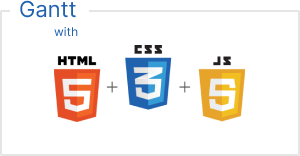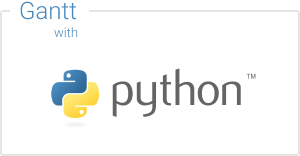How to Start with dhtmlxGantt
How to Start with Gantt and Front-End
Here's the overview of guides which tell you about basic Gantt initialization with popular front-end frameworks.
|
dhtmlxGantt in Plain JS/HTML
A comprehensive tutorial that describes how to create Gantt using plain JavaScript and HTML. |

|
|
dhtmlxGantt with Angular
An elaborated tutorial that explores the specificity of implementing a Gantt chart with Angular. |

|
|
dhtmlxGantt with React
A detailed tutorial which dwells on Gantt chart implementation with React. |

|
|
dhtmlxGantt with Vue.js
An extensive tutorial that describes how to create Gantt using Vue.js. |

|
|
dhtmlxGantt with Svelte
A comprehensive tutorial that discusses how to create Gantt using Svelte. |

|
How to Start with Gantt on Server Side
You can watch the video guide that shows how to create a Gantt chart on the page and load the data into it on the example of a Node.js platform.
Below you will find a brief overview of the guides which tell you about basic Gantt initialization on different server-side platforms to suit all tastes and preferences.
|
dhtmlxGantt with ASP.NET Core
A comprehensive tutorial that describes how to use Gantt together with ASP.Net Core. |

|
|
dhtmlxGantt with ASP.NET MVC
An elaborated tutorial that explores the specificity of implementing a Gantt chart with ASP.NET MVC and ASP.NET WebAPI 2. |

|
|
dhtmlxGantt with Node.js
A detailed tutorial which dwells on Gantt chart implementation on a Node.js platform. |

|
|
dhtmlxGantt with PHP: Laravel
A comprehensive tutorial that discusses how to add Gantt into a Laravel app. |

|
|
dhtmlxGantt with PHP:Slim
A comprehensive tutorial that discusses how to implement a PHP-based Gantt using a Slim 4 Framework. |

|
|
dhtmlxGantt with Python
A detailed tutorial which teaches how to implement a Python-based Gantt using a Django 4 Framework. |

|
|
dhtmlxGantt with Salesforce LWC
An extensive tutorial that helps you to create a Gantt chart inside SalesForce Lightning Web Component. |

|
|
dhtmlxGantt with Ruby on Rails
An easy to reproduce tutorial that will walk you through the stages of implementing a Gantt chart on the base of Ruby on Rails. |

|